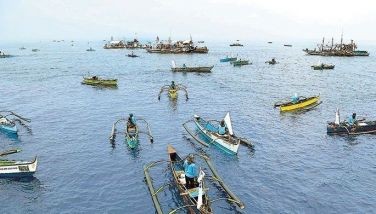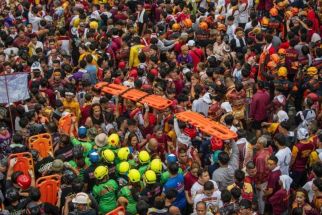Yolanda victims to get construction materials instead of bunkhouses
MANILA, Philippines - Instead of building bunkhouses, the Department of Public Works and Highways (DPWH) said yesterday that it would be giving the victims of Super Typhoon Yolanda construction materials so they could build their own shelters.
In an interview over dzMM radio, Public Works Secretary Rogelio Singson said he agrees with the pronouncement of rehabilitation czar Panfilo Lacson that the government would no longer be building bunkhouses, following allegations that the bunkhouses built were overpriced and substandard. But Lacson denied there was overpricing.
The DPWH chief said storm survivors would receive construction materials worth P10,000 to P30,000, depending on the degree of damage of their homes.
He said this was the same scheme that the DPWH applied to those who were affected by the siege in Zamboanga and the 7.2-magnitude earthquake that struck Bohol last year.
Singson also said that the DPWH started a month ago distributing construction materials such as galvanized iron (GI) sheets, lumber, tool kits, umbrella and regular nails to affected areas like Guiuan, Eastern Samar.
This move, he said, would allow affected families to build their own temporary shelters. However, they are not allowed to put up structures in “no-build zones†or within the 40-meter easement from the shoreline.
He also said that there is a possibility of implementing cash for work programs in affected areas to enable homeowners to hire carpenters.
Singson said he believes that providing the families with construction materials was a better alternative since the DPWH is encountering difficulty in looking for sites to erect the bunkhouses.
It would still be up to the local government units to identify relocation sites for permanent housing, which would be constructed by volunteer private organizations and non-government organizations.
DOST’s alternative shelter
Meanwhile, the Department of Science and Technology’s Forest Products Research and Development Institute (FPRDI) has crafted an alternative shelter model for victims of natural calamities.
The FPRDI has designed the DIY (Do-It-Yourself) Bamboo Shelter, a low-cost and environment-friendly shelter which can be constructed within one to two days with the use of simple tools.
The STAR learned that the shelter is being considered as a possible alternative housing for survivors of Typhoon Yolanda.
A 24-square-meter DIY Bamboo Shelter has been built in the FPRDI complex in the University of the Philippines Los Baños College of Forestry and Natural Resources for the benefit of interested stakeholders.
An FPRDI assessment indicated that the structure is durable. The materials used were kiln-dried miscellaneous lumber and buho.
“Based on the final design after the fabrication of the table model, panelized forms of the wall and roof of the shelter were fabricated using bamboo poles and miscellaneous lumber as columns and frames,†the FPRDI said.
A manual on the procedure in assembling the DIY Shelter has also been prepared.
The FPRDI said the cost of the full-size shelter is P3,819.51/sq m. This is within the range of prices of houses in community-based housing projects and much lower than the prices of low-cost and socialized housing units.
Home designing competition launched
In a related development, property developer Ortigas & Co., in partnership with the DOST and Habitat for Humanity, launched yesterday the Build Forward nationwide design competition among architecture students to come up with the best design for a disaster-resilient home and school building.
The challenge for students is to work on house and school designs that can withstand an intensity 8 earthquake and wind gusts of up to 250 kilometers per hour.
Other considerations are cost, construction time, and use of locally sourced and readily available materials.
The house should be at least 36 sq. m. with two bedrooms, one toilet and bath, kitchen and living space. The construction time should be a month and a half within a budget of P200,000.
The school building should have four classrooms and one toilet and bath with a minimum area of 63 sq. m. per classroom. The school must also be ready to be used as an evacuation center. The construction time should be two months within a budget of P1,200,000.
Ortigas has officially opened an online registration facility (www.buildforward.com.ph) for the full set of mechanics.
The DOST is part of the government’s effort to come up with disaster-resilient housing, especially in typhoon-devastated Eastern Visayas region.
Science and Technology Secretary Mario Montejo expressed the commitment of the DOST in helping evaluate the designs, building a prototype of the winning designs and conducting durability tests.
Habitat for Humanity will adopt the best designs generated by the competition.
Binay: Yolanda housing on track
Meanwhile, Vice President Jejomar Binay said yesterday that construction of housing units for Yolanda survivors in Tanauan, Leyte is on track.
Binay, chairman of the Housing and Urban Development Coordinating Council and Pag-IBIG Fund, said the Prime Town Housing projects phases 1 and 2 in Tanauan would be undertaken by the National Housing Authority (NHA) in partnership with the Gawad Kalinga (GK). – With Rudy Fernandez, Jose Rodel Clapano, Rainier Allan Ronda
- Latest
- Trending





























